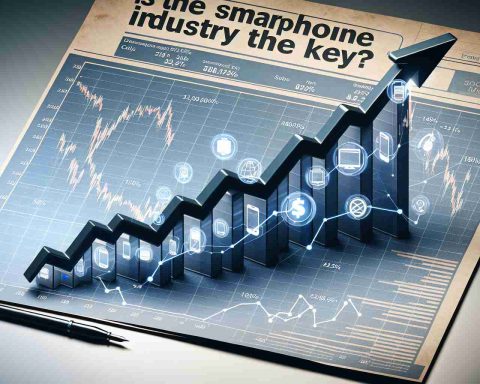In an era where technology evolves rapidly, many individuals find themselves considering the trade-in of their old smartphones. The initial purchase cost of high-end devices, like the latest iPhone or Android models, can exceed $800. However, just like cars, these gadgets depreciate drastically the moment they leave the store.
While carrier trade-ins often seem appealing, they may not offer the best financial return. For instance, trading in an iPhone 12 could yield around $180 in credits towards a new model, but there might be better options available.
Companies that specialize in purchasing used smartphones for cash could provide more lucrative offers. Gazelle, for example, reportedly offers $129 for an iPhone 12. Another service, SellCell, connects sellers with potential buyers, with offers sometimes reaching $160.
Even damaged smartphones should not be overlooked. Firms such as USell offer cash for broken devices, with an iPhone 12 potentially fetching approximately $61 based on its condition.
Kiosks located in malls may provide quick cash, but the offers are usually lower, such as $85 for an iPhone 12.
For those willing to navigate online sales, platforms like Craigslist or Facebook Marketplace could offer the best returns. Unlocked iPhone 12 models have been listed at prices ranging from $300 to $340, depending on various factors.
When selling your device, remember to safeguard your personal information by resetting it to factory settings, and always meet buyers in safe locations to ensure a secure transaction.
Maximizing Value When Trading In Your Old Smartphone: A Comprehensive Guide
In today’s fast-paced technology landscape, many consumers face the dilemma of upgrading their smartphones while ensuring they receive maximum value for their older devices. With smartphones becoming essential everyday tools, understanding how to capitalize on their trade-in value can significantly alleviate the financial burden of purchasing new models. This article explores critical questions, key challenges, advantages, and disadvantages associated with trading in old smartphones.
Key Questions to Consider
1. What is the current trade-in value of my smartphone?
Conducting thorough research on your device’s trade-in value is crucial. Websites like Gazelle, SellCell, or Swappa provide real-time comparisons of offers from various companies and can help you gauge what you should expect.
2. What factors contribute to the value of my old smartphone?
A smartphone’s condition, age, demand for that specific model, and whether it is unlocked or carrier-locked significantly impact its resale value. Minor issues, like scratches or battery health, can also affect the final offer.
3. Should I trade in my device or sell it privately?
Selling privately often yields a higher return, but it comes with risks and challenges, such as negotiating prices and handling payments securely. If time is a constraint or if you’re uncomfortable with the process, a trade-in might be the better option.
Challenges and Controversies
– Depreciation Concerns: Smartphones depreciate quickly, and it’s common for models to lose significant value within just six months to a year. This rapid depreciation raises concerns about waiting too long to trade in a device before it becomes practically worthless.
– Hidden Fees and Conditions: Companies often list trade-in values that appear attractive, but they may come with hidden fees or stringent conditions. Consumers should read the fine print carefully to avoid unpleasant surprises.
– Environmental Impact: The trade-in process can raise valid concerns regarding electronic waste. While trading in can reduce waste, it’s important to understand what happens to your device after the trade to ensure responsible recycling practices.
Advantages of Trading In
1. Convenience: Trade-in options are often straightforward. Most retailers and carriers have simplified processes that allow consumers to receive credit towards new purchases seamlessly.
2. Immediate Gratification: Many trade-in services provide instant credit, allowing users to offset the cost of a new phone immediately, which is faster than waiting for a private sale to finalize.
3. Easy Upcycling: Participating in the trade-in market contributes to a circular economy, which is beneficial for the environment, as these devices are often refurbished and resold.
Disadvantages of Trading In
1. Lower Return Rates: Often, trading in provides less financial return compared to selling privately, where a seller might receive a higher price for their device.
2. Condition Limitations: The trade-in value can drastically decrease if the device has any issues. Different companies have varying assessments of condition, which can lead to negotiations that muddle the process.
3. Data Management Risks: While most companies provide assurances about data wiping, there’s always a risk regarding personal data security. Consumers need to take extra precautions to secure their information before handing over their devices.
In conclusion, maximizing the value when trading in your old smartphone involves careful consideration of the available options. From understanding current market values to knowing the potential pros and cons of the trade-in process, consumers can make informed decisions leading to optimal financial return.
For further information on maximizing your technology investments and trading practices, visit Consumer Reports for comprehensive guides and reviews.




























